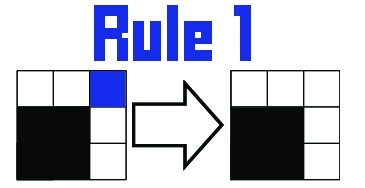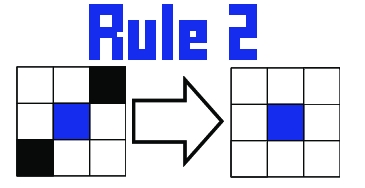The Game With No Player.
Game of life, no, not the board game, is a simple simulation of living cells. John Conway and his group of friends developed the Game of life during their lunch breaks before they even had access to a computer. They spent many different "coffee talks" adjusting the laws of the Game of Life. Eventually, they landed on the famous four rules of the game.

Any live cell with fewer than two live neighbours dies, as if by underpopulation.

Any live cell with two or three live neighbours lives on to the next generation.

Any live cell with more than three live neighbours dies, as if by overpopulation.

Any dead cell with exactly three live neighbours becomes a live cell, as if by reproduction.
The game's purpose was to exercise further John Von Neumann's thought of a machine that could build a copy of itself. Conway and his friends simulated this idea on paper using what is called an automaton. Neumann's idea was the basis of the now-viral programming project to be coded by programmers worldwide. Created initially on paper, when the Programmed Data Processor 7 (PDP7) computer became available, someone went ahead and made the first implementation of the Game of Life.

In 2017, my Intro to Programming professor assigned Conway's creation as homework. It took a few days to get something to output to the console, but I still remember being eager to show off what I had made to my friends. Game of life was the first challenge for me. I thought that after graduating, it would be fitting that I reinvent the program for my website. Creating a few buttons to control the output, creating a movable UI, and significant improvements. The project tested my JavaScript knowledge. Making it was just as fun as I remember it. If you'd like to see more, you can visit the Game of life GitHub repository. Or you can view a full-screen version here: